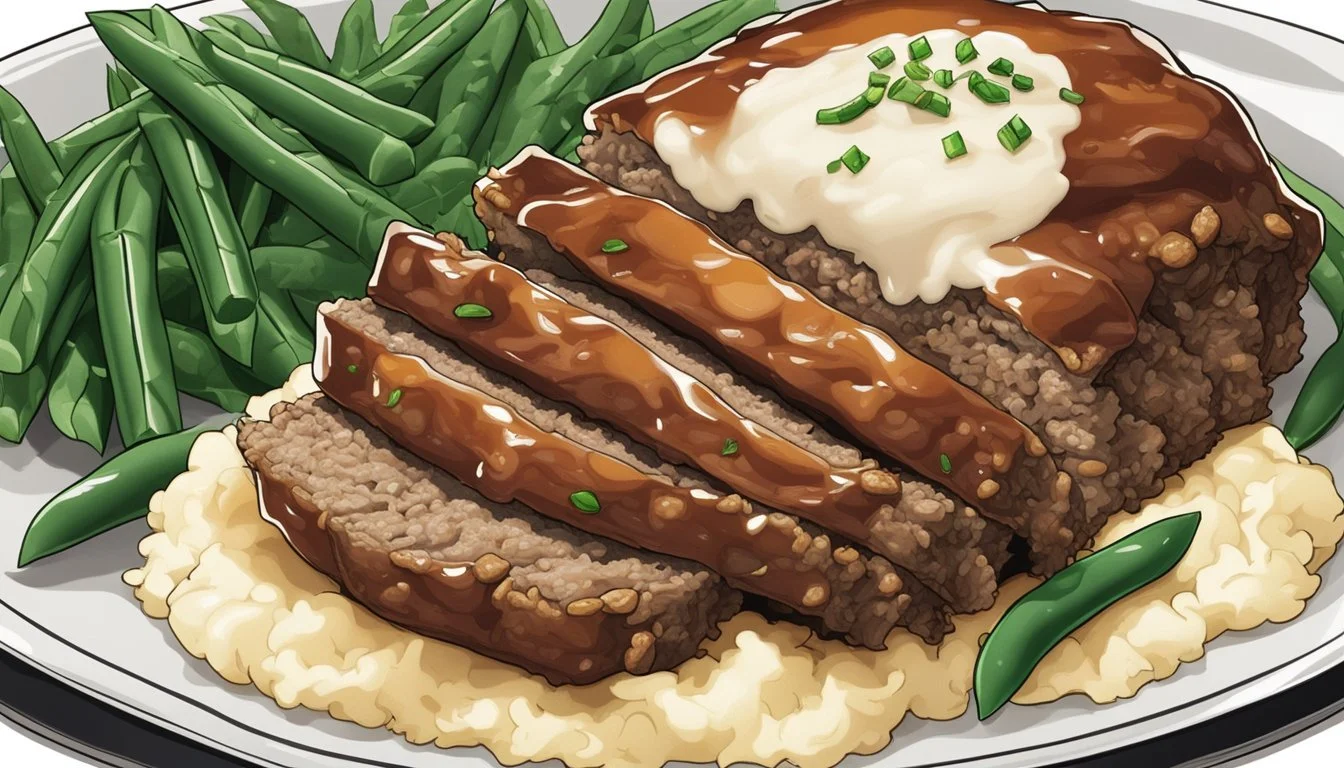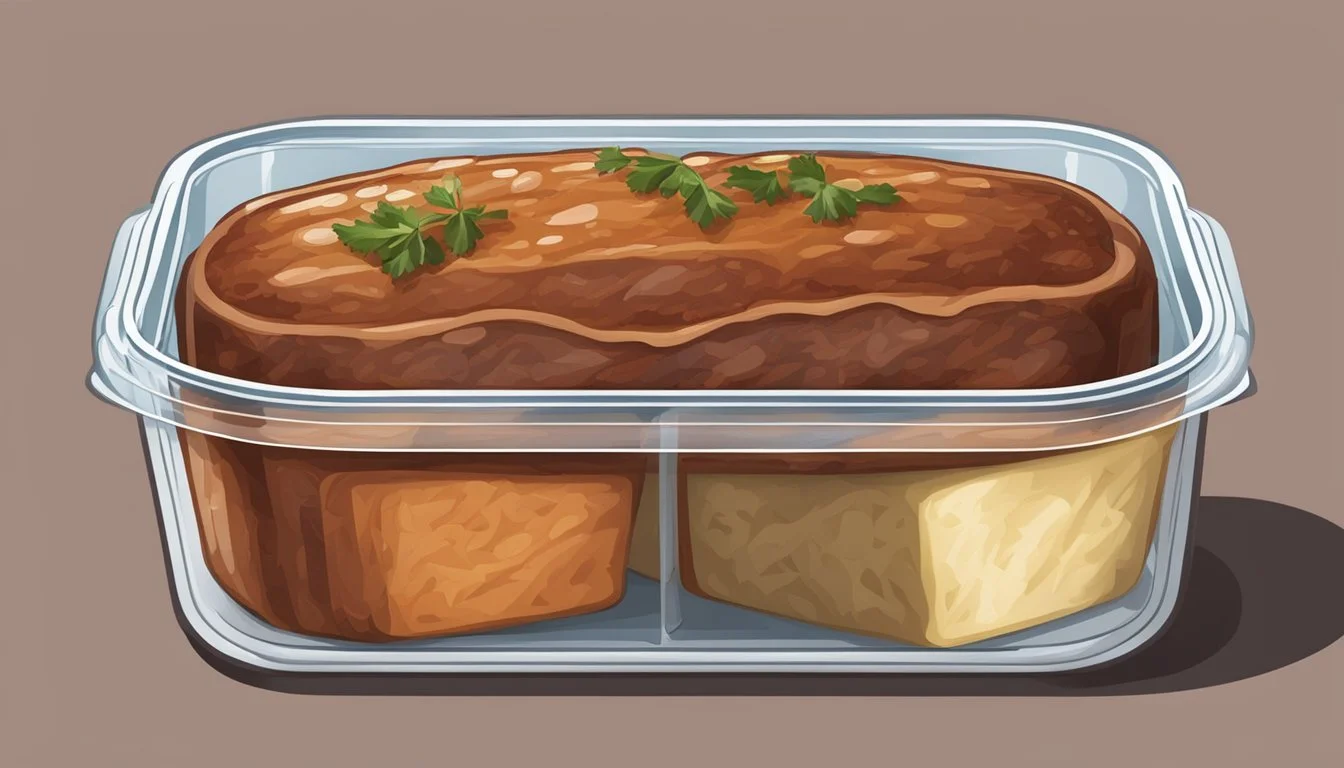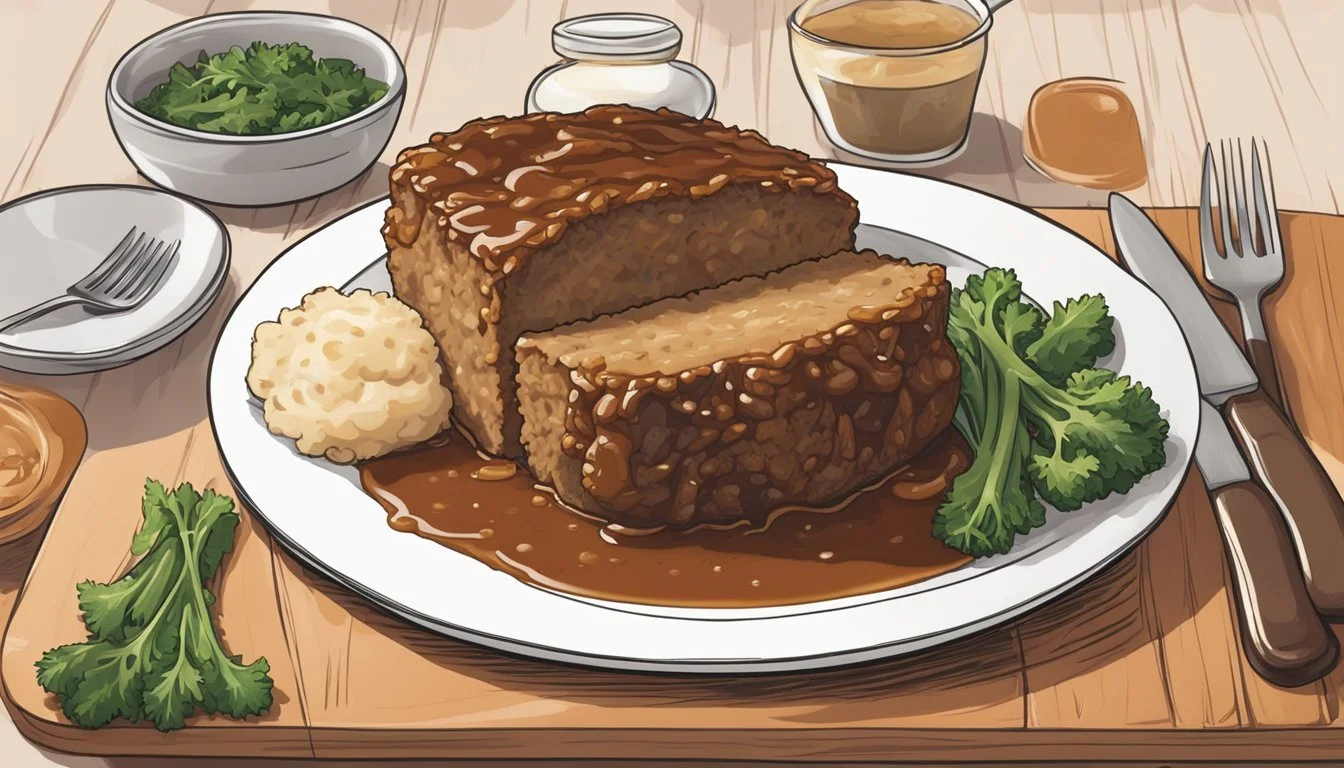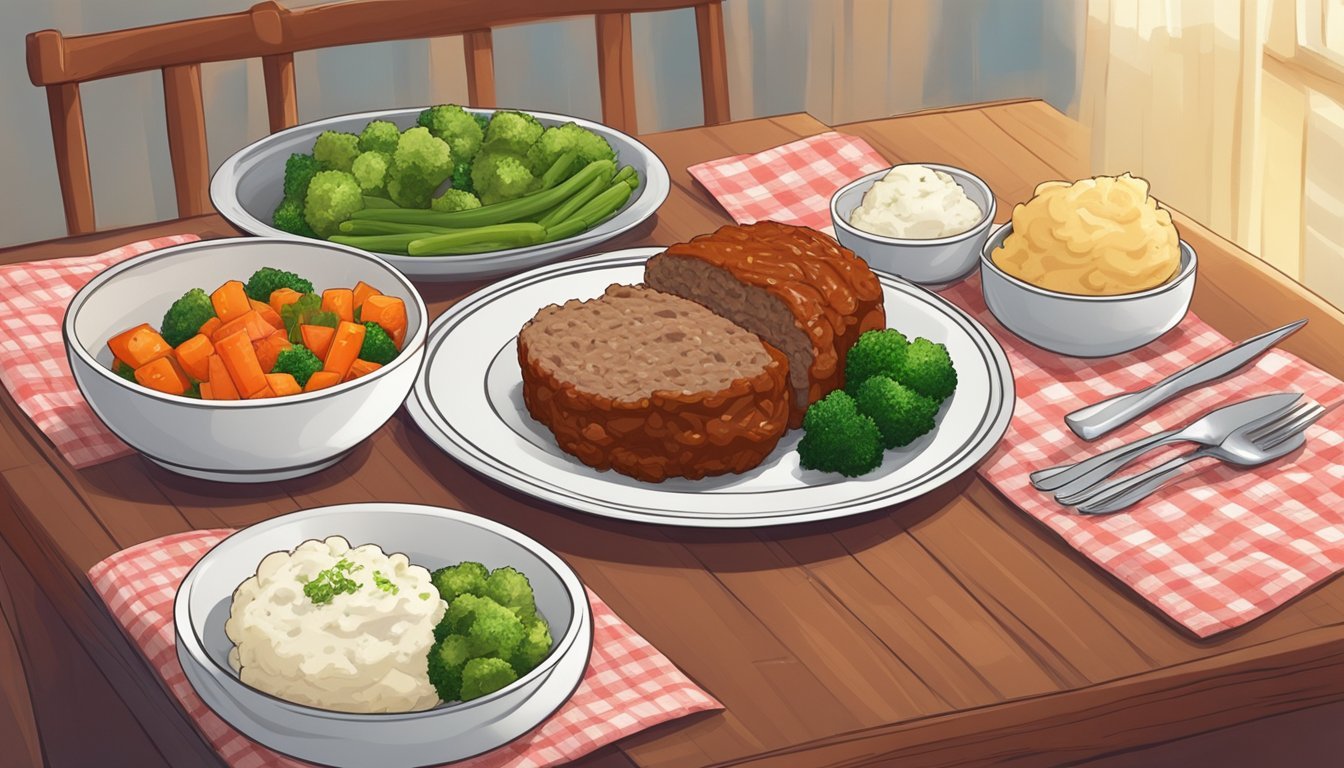How Long Does Boston Market Meatloaf Last?
Shelf Life Guide
Wondering how long Boston Market meatloaf lasts and how to keep it fresh? Boston Market meatloaf can last up to three to four days in the refrigerator when stored properly in an airtight container. This ensures it remains safe to eat and retains its flavor.
For those looking to extend the shelf life a bit longer, freezing is an excellent option. When frozen, properly wrapped meatloaf can last up to three months. Remember to label it with the date to avoid any guessing games later.
Keeping these timeframes in mind can help you plan meals efficiently and avoid waste. This guide will dive further into best storage practices and tips for reheating to keep your Boston Market meatloaf tasting fresh.
Understanding the Shelf Life of Boston Market Meatloaf
Boston Market meatloaf, like other cooked meats, requires proper storage to maintain its quality and safety.
Refrigerator Storage: Store cooked Boston Market meatloaf in the refrigerator at 40°F (4°C) or below. It should be wrapped tightly in aluminum foil, plastic wrap, or stored in an airtight container. Under these conditions, the meatloaf will last for 3 to 4 days.
Freezer Storage: For longer shelf life, freezing is an option. When stored in a freezer-safe, airtight container, or heavy-duty freezer bags, it can last up to three months. Always label the container with the date to keep track of storage time.
Signs of Spoilage: Be vigilant for signs that meatloaf has gone bad. These include mold, a slimy texture, or a foul odor. If Boston Market meatloaf exhibits any of these signs, it should be discarded.
Storage Tips for Quality Maintenance:
Cool meatloaf to room temperature before refrigerating or freezing.
Minimize air exposure to prevent drying out and odor absorption from the fridge.
Keep the refrigerator at a consistent temperature.
By following these guidelines, Boston Market meatloaf can be enjoyed safely within its shelf life, ensuring it remains as tasty and fresh as possible.
Ingredients Impact on Longevity
The longevity of Boston Market Meatloaf is influenced by its ingredients. Elements such as ground beef, binding agents, and condiments play significant roles in determining its shelf life when stored properly.
Ground Beef and Other Meats
Ground Beef: The quality and freshness of ground beef affect how long meatloaf lasts. Ground beef should be stored at 40°F (4°C) or below. Cooked ground beef-based meatloaf stored in the fridge can last 3 to 4 days.
Ground Pork and Turkey: If the meatloaf includes ground pork or turkey, similar storage guidelines apply. Mixing different meats, like beef and pork, might slightly alter the shelf life due to varying fat content.
Chicken: In some recipes, chicken is used. Ensure it is thoroughly cooked as chicken has different spoilage characteristics compared to red meats. Proper handling and storage are crucial.
Binding Ingredients and Additives
Eggs: Eggs are common binding agents. Freshness and proper cooking of eggs impact the meatloaf’s longevity. Cooked egg-based dishes should be stored properly to avoid spoilage.
Breadcrumbs: These not only bind but also absorb excess moisture. Using dry, fresh breadcrumbs can prevent the meatloaf from becoming too moisture-laden, which can extend its storage life.
Cheese: Some recipes include cheddar cheese. Cheese needs to be fresh and properly integrated into the mixture to avoid faster spoilage by moisture.
Other Additives: Seasonings and dry additives like onion powder, garlic powder, and flour should be stored in a cool, dry place before use to maintain their effectiveness.
Sauces and Seasonings
Tomato Sauce and Ketchup: These moisture-rich ingredients add flavor but can also impact the meatloaf’s longevity. Using high-quality sauces and properly refrigerating cooked meatloaf can help extend its shelf life.
Salt and Pepper: Essential for seasoning, these ingredients don’t affect shelf life much. However, ensuring a well-seasoned meatloaf can improve its taste over its storage period.
Brown Sugar and Glaze: Glazes, often made with brown sugar, can add sweetness. Ensure these are properly cooked to reduce spoilage risk.
Additional Seasonings: Garlic salt, black pepper, dice tomatoes, thyme, and others should be fresh and properly measured. Balance of seasoning can contribute to overall taste and indirectly to storage potential as well.
Proper Storage Techniques
To ensure the safety and quality of Boston Market meatloaf, it is essential to follow proper storage techniques. This will help maintain the meatloaf's flavor, moisture, and texture while extending its shelf life.
Refrigeration Practices
Cooked Boston Market meatloaf must be stored in the refrigerator within two hours of cooking. Place the meatloaf in an airtight container or wrap it tightly in aluminum foil or plastic wrap to prevent it from drying out and absorbing other odors.
Store the meatloaf in the coldest part of the refrigerator, typically on a lower shelf. It can be kept in the fridge for 3 to 4 days. Ensure proper labeling with dates to keep track of freshness.
If the meatloaf contains perishable ingredients like eggs and onions, these may affect the overall storage time, so always check for signs of spoilage such as off smells or discoloration.
Freezing and Thawing Meatloaf
For longer storage, freezing is an effective method. Before freezing Boston Market meatloaf, ensure it is completely cooled. Wrap individual slices or the entire loaf tightly in freezer-safe wrap or aluminum foil, followed by placing them in a freezer-safe container.
Label the container with the date to monitor how long it has been stored. Frozen meatloaf can last up to 3 months in the freezer. When ready to use, either thaw the meatloaf in the refrigerator overnight or cook it directly from frozen.
Ensure the meatloaf reaches an internal temperature of 160°F for beef or 165°F for poultry. Thawing in the refrigerator helps retain the meatloaf’s juicy and moist texture, making it as delightful as freshly cooked.
Boston Market Meatloaf Recipe Overview
The Boston Market Meatloaf Recipe is a beloved dish characterized by its moist, flavorful meatloaf and rich glaze. This overview covers the essential details of the recipe and offers variations for making a perfect copycat version.
Recipe Card Details
The Boston Market Meatloaf Recipe typically includes ground beef, ground pork, and a blend of seasonings. Onion, tomato sauce, ketchup, and Dijon mustard are key ingredients for the meat mixture. It's common to combine these in a large bowl and then shape the mixture into a loaf, placing it into a loaf pan for baking.
A signature glaze, made from mixing ketchup and barbecue sauce, is poured over the top. The recommended temperature for baking is usually around 375°F (190°C). Covering the meatloaf with aluminum foil helps keep it moist. Baking time varies but is generally around 30-45 minutes.
This meatloaf pairs well with classic sides such as mac and cheese and green beans.
Copycat Recipe Variations
Many copycat recipes aim to replicate the original Boston Market flavor. Some variations involve adding bell pepper to the meat mixture for a hint of sweetness and crunch. Others suggest using sour cream and onion soup mix for additional moisture and flavor complexity.
Cooking methods can vary, too. For instance, the meatloaf can be baked at lower temperatures like 250°F for a longer duration to ensure tenderness. Alternatively, using an air fryer can speed up the process while still achieving a crispy exterior.
Each alteration maintains the core essence of the Boston Market's recipe while allowing personalization to taste.
Serving Suggestions and Pairings
Boston Market meatloaf pairs well with a variety of side dishes and can be transformed into new dishes with leftovers. This versatility ensures that your meal remains exciting and full of flavor.
Accompanying Side Dishes
Mashed potatoes are a classic choice to serve alongside Boston Market meatloaf. Their creamy texture complements the rich savory meatloaf, especially with a drizzle of gravy. For a lighter option, consider a green salad with a tangy vinaigrette to balance the heaviness of the meatloaf.
Mac and cheese provides a cheesy delight that kids and adults will enjoy. If you prefer something crunchy, coleslaw can add a refreshing crunchiness. Green beans or french fries also make excellent companions, ensuring a balanced and satisfying meal.
Dinner rolls are perfect for soaking up any remaining sauce. Adding a simple salad or some buttered corn rounds out the meal without overwhelming the palate.
Creative Ways to Repurpose Leftovers
Leftover Boston Market meatloaf can easily be transformed into delicious new dishes. Sandwiches are an excellent option; layer slices of meatloaf between two pieces of toasted bread, adding lettuce, tomato, and a bit of mayo for a quick and tasty meal.
Consider making tacos by crumbling the meatloaf and adding it to tortillas with some cheese, salsa, and avocado. Another idea is to crumble the meatloaf into a pasta dish, mixing it with marinara sauce and penne for a hearty dinner.
Additionally, chop the meatloaf and mix it with sautéed vegetables for a stir-fry. These creative uses ensure that leftovers do not go to waste and provide delicious alternatives to the standard serving options.
Safety Tips for Handling Cooked Meat
Refrigerating cooked meat correctly is essential for preventing foodborne illnesses. Store cooked meat in the refrigerator at 40°F (4°C) or below. Using an airtight container or wrapping it in aluminum foil or plastic wrap can help maintain freshness.
Timing is critical. Cooked meat should be refrigerated within two hours after cooking. If the ambient temperature is above 90°F (32°C), this window shortens to one hour. Delaying refrigeration can result in bacterial growth, increasing the risk of illness.
Avoid the "danger zone" where bacteria multiply rapidly, which is between 40°F and 140°F (4°C-60°C). A meat thermometer can help ensure cooked meat is stored and served at safe temperatures. Foods should not be left out for extended periods within this range.
Reheat leftovers to an internal temperature of 165°F (73.9°C) before consuming. Using a meat thermometer ensures the center of the meat reaches a safe temperature, killing any lingering bacteria.
Avoid cross-contamination by keeping cooked meat separate from raw meat. Use different cutting boards, utensils, and storage containers to minimize the risk of spreading harmful bacteria.
When freezing cooked meat, use airtight containers or freezer-specific wraps. Label the packages with the date to track how long they have been stored. Properly frozen, meat can last several months, but always check for signs of freezer burn or spoilage.
Handling cooked meat safely involves timely refrigeration, maintaining safe temperatures, and preventing cross-contamination. Simple practices can keep meals both delicious and safe to eat.
Shelf Life Extension Tips
To maximize the shelf life of Boston Market meatloaf, consider ingredient substitutions and optimizing cooking methods. These strategies help maintain flavor, moisture, and overall quality, ensuring the meatloaf stays safe to eat for longer periods.
Ingredient Substitutions
Flavor Enhancers: Incorporate garlic powder and dry onion into the meatloaf mixture for richer flavor. These ingredients enhance taste while extending shelf life.
Moisturizers: Use plain breadcrumbs or oats to retain moisture. These binders keep the meatloaf from drying out, making leftovers juicy and delicious.
Substitutes for Fresh Ingredients: Substitute fresh ingredients with dried or powdered versions when possible. For instance, use dried parsley instead of fresh. Dried spices have a longer shelf life and reduce the risk of spoilage.
Lean Meat Mix: Combine ground beef with ham or turkey. Lean meats reduce fat content, making the meatloaf less prone to rancidity.
Optimizing Cooking Methods
Cooking Time and Temperature: Cook the meatloaf thoroughly but avoid overcooking. Use a meat thermometer to ensure an internal temperature of 160°F (71°C). Overcooking can lead to dryness, while undercooking is a food safety risk.
Oven Cooking: Preheat the oven to the desired temperature. Cooking at a consistent, moderate heat helps maintain the meatloaf's moisture and ensures even cooking.
Air Fryer: Consider cooking or reheating leftover meatloaf in an air fryer. Preheat the air fryer to 350°F (175°C), and cook for 10-15 minutes. This method keeps the meatloaf juicy while giving it a crispy exterior.
Storage Tips: For leftovers, store meatloaf in airtight containers or wrap tightly in aluminum foil. Refrigerate immediately to slow bacterial growth and freeze if you need to store it for more than four days.
Common FAQs About Boston Market Meatloaf
Boston Market meatloaf is a popular family favorite, known for its savory taste and comforting flavors. Key considerations for consumers include nutritional information and potential allergy concerns.
Nutritional Information
Boston Market meatloaf provides a balanced mix of protein, fat, and carbohydrates. A typical serving size of about 142 grams contains approximately 320 calories. It includes around 18 grams of protein, 20 grams of fat, and 16 grams of carbohydrates. This makes it a hearty option that can be part of a balanced meal.
Additionally, it offers essential nutrients like iron and vitamin B12, which are important for maintaining energy levels and overall health. For those watching their sodium intake, note that a serving can contain up to 900 mg of sodium.
Allergy Concerns
Boston Market meatloaf contains several common allergens. The ingredients often include wheat, soy, and dairy products such as milk or cheese. Due to the use of eggs in the recipe, it also poses a risk for individuals with egg allergies.
Consumers with food allergies should always check ingredient labels and consult with Boston Market staff if uncertain about specific allergen content. Cross-contamination is also a possibility in kitchens, so it's crucial to be cautious if you or a family member has severe allergies.
Conclusion
Boston Market meatloaf can last for several days when stored properly.
Refrigerating cooked meatloaf at 40°F (4°C) or below can maintain its quality for 3 to 4 days. It's crucial to wrap the meatloaf tightly in aluminum foil, plastic wrap, or use an airtight container.
Freezing cooked meatloaf is an option for longer preservation. Freezing can extend the meatloaf's life significantly, but it's important to package it properly to avoid freezer burn.
Using reheating methods like the oven or air fryer can help restore some of the meatloaf's original texture and flavor. Reheating tips include adding a splash of water or broth and wrapping it in foil.
Proper packaging and temperature conditions are key to ensuring the meatloaf remains safe to eat. This simple care can maximize the freshness and taste of the meatloaf.
By following these guidelines, one can enjoy Boston Market meatloaf even days after its initial serving.










